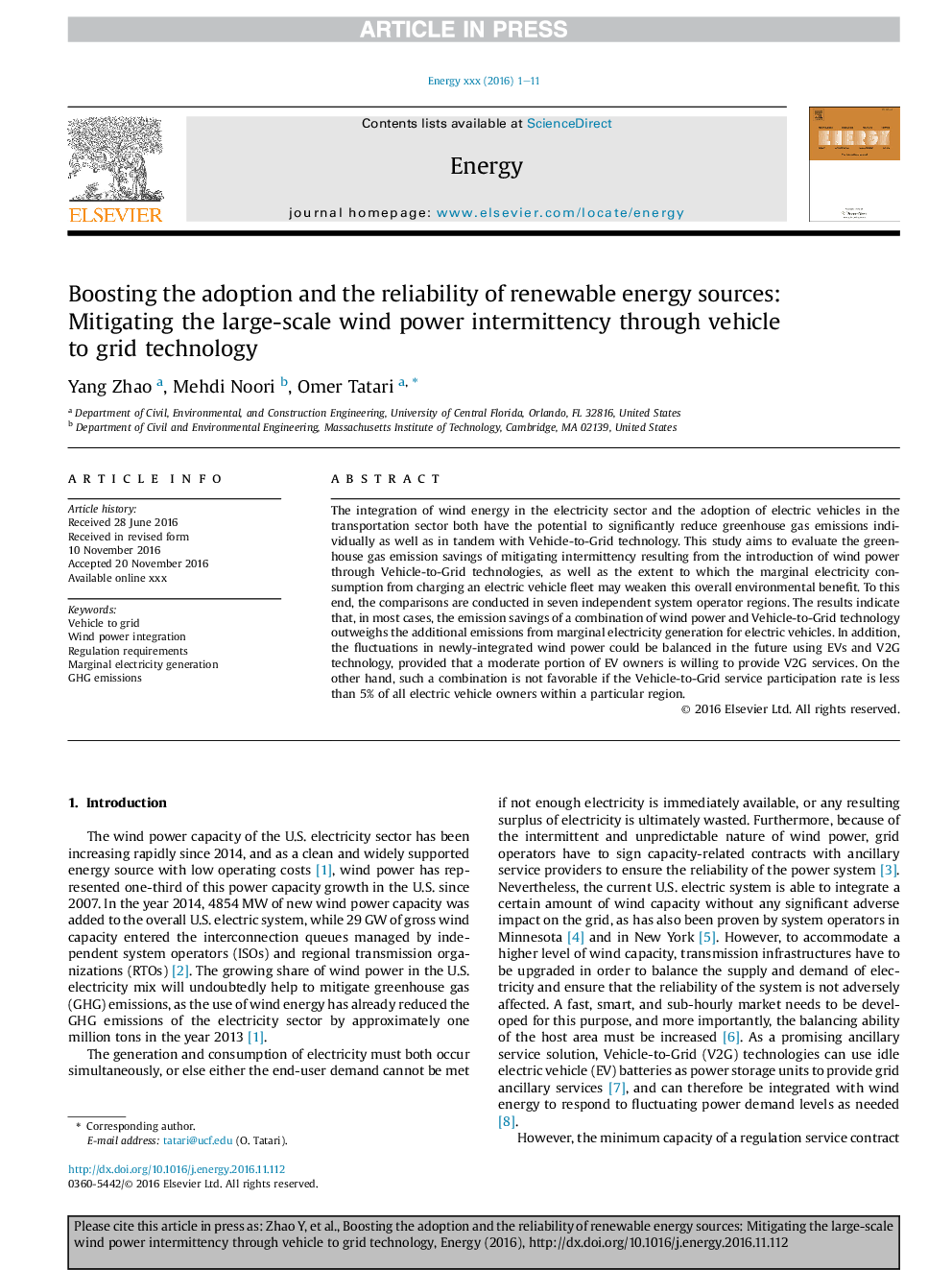| Article ID | Journal | Published Year | Pages | File Type |
|---|---|---|---|---|
| 5476190 | Energy | 2017 | 11 Pages |
Abstract
The integration of wind energy in the electricity sector and the adoption of electric vehicles in the transportation sector both have the potential to significantly reduce greenhouse gas emissions individually as well as in tandem with Vehicle-to-Grid technology. This study aims to evaluate the greenhouse gas emission savings of mitigating intermittency resulting from the introduction of wind power through Vehicle-to-Grid technologies, as well as the extent to which the marginal electricity consumption from charging an electric vehicle fleet may weaken this overall environmental benefit. To this end, the comparisons are conducted in seven independent system operator regions. The results indicate that, in most cases, the emission savings of a combination of wind power and Vehicle-to-Grid technology outweighs the additional emissions from marginal electricity generation for electric vehicles. In addition, the fluctuations in newly-integrated wind power could be balanced in the future using EVs and V2G technology, provided that a moderate portion of EV owners is willing to provide V2G services. On the other hand, such a combination is not favorable if the Vehicle-to-Grid service participation rate is less than 5% of all electric vehicle owners within a particular region.
Related Topics
Physical Sciences and Engineering
Energy
Energy (General)
Authors
Yang Zhao, Mehdi Noori, Omer Tatari,
